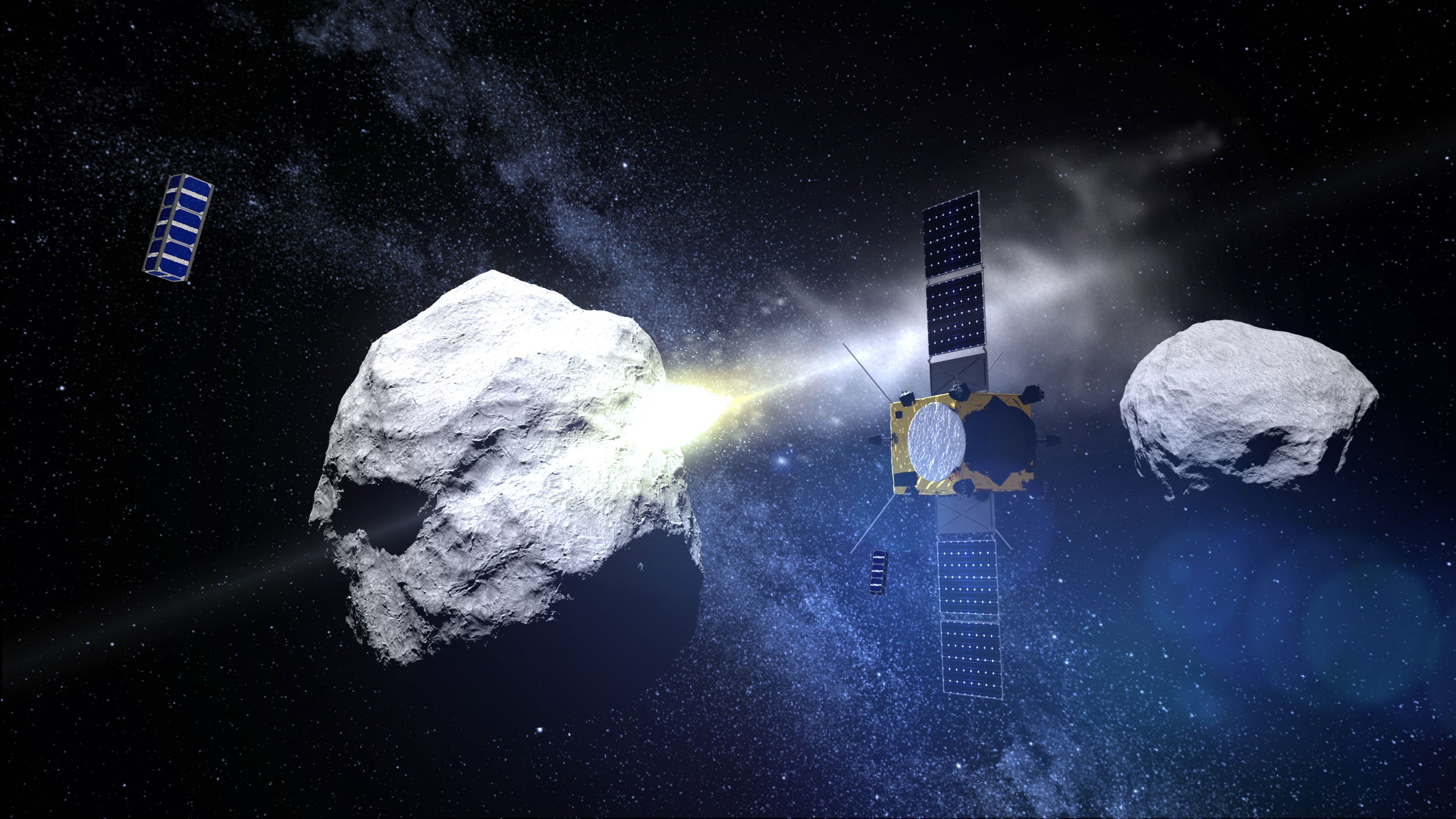End of the world plan: scientists to nudge asteroid off course as practice for protecting the Earth
US and European officials will work together to send up two spacecraft, one of which will smack into the rock

Scientists are to send two spacecraft to knock an asteroid off course, as part of a practice for what they would do if a rock was threatening the future of humanity.
The joint US-European Aida (Asteroid Impact & Deflection Assessment) mission will send a small spacecraft to crash into the egg-shaped rock, known as Didymoon. That asteroid doesn’t pose any threat to us — and is far too small to do so — but the mission will be important test for whether our plans would work if we do eventually come at risk of civilisation being wiped out by a space rock.
The missions are set to be launched in October 2020. They are expected to reach Didymoon by May 2022.
Nasa will send one craft in a mission known as Double Asteroid Redirection Test (Dart) mission. It will fire a probe to smack into the rock and see if it can throw it off course.
As well as the nudging probe, scientists will send another spacecraft — the European Space Agency’s Asteroid Impact Mission (Aim). That will fly around Didymoon watching for the effect of the Dart mission, as well as measuring the asteroid’s mass and density and putting a small lander on the asteroid itself to look at its insides.
"To protect Earth from potentially hazardous impacts, we need to understand asteroids much better - what they are made of, their structure, origins and how they respond to collisions,” said Dr Patrick Michel, lead investigator for the European Space Agency half of the mission.
"Aida will be the first mission to study an asteroid binary system, as well as the first to test whether we can deflect an asteroid through an impact with a spacecraft. The European part of the mission... will study the structure of Didymoon and the orbit and rotation of the binary system, providing clues to its origin and evolution.
"Asteroids represent different stages in the rocky road to planetary formation, so offer fascinating snapshots into the solar system's history."
The closest that Didymoon has got to Earth in recent times was in 2003, when it came as near as 4.46 million miles away.
Join our commenting forum
Join thought-provoking conversations, follow other Independent readers and see their replies
0Comments